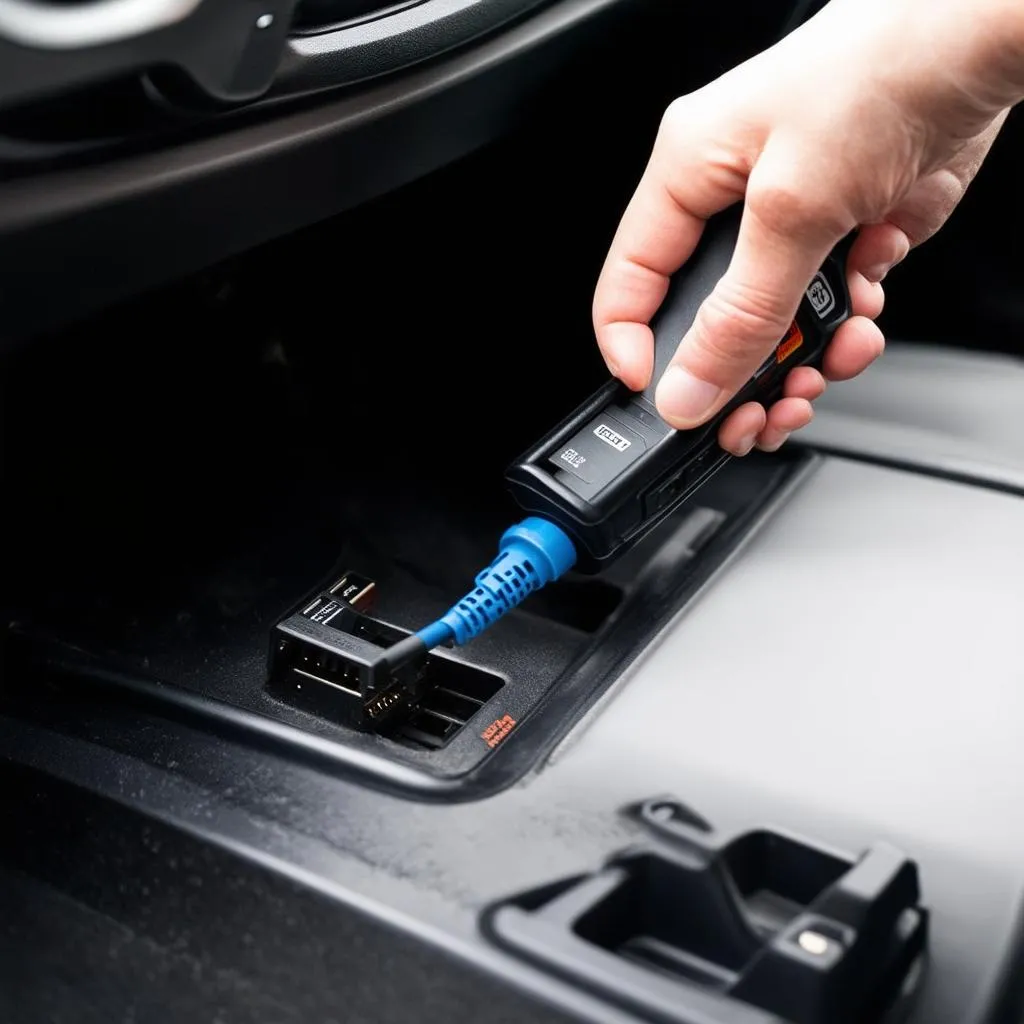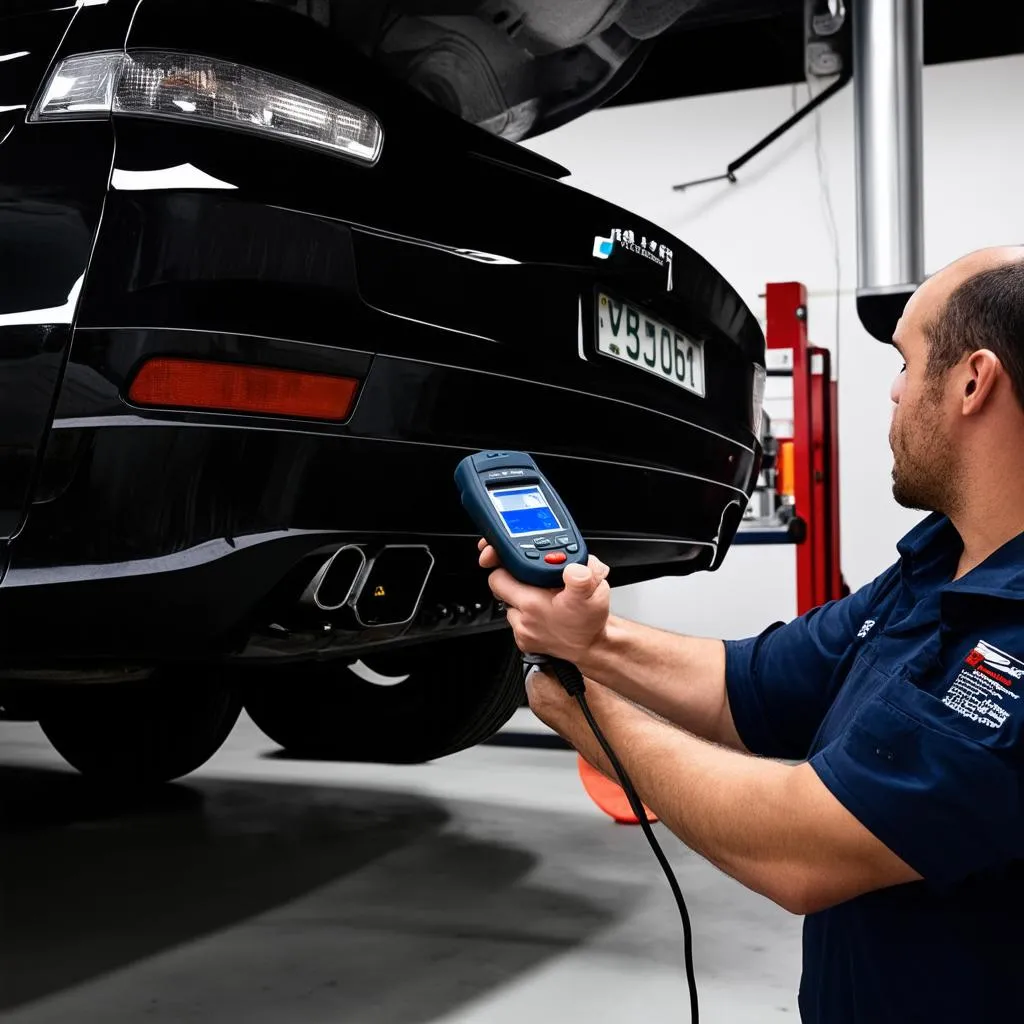Have you ever played hide-and-seek with a tiny port that holds the key to your car’s inner workings? That’s what finding the OBD port can feel like for first-timers! But don’t worry, just like a seasoned mechanic with X-ray vision, we’re here to demystify the OBD connection and guide you through it.
What is an OBD Scanner and Why Should I Care?
“OBD scanner” – sounds technical, right? Imagine your car having a secret diary where it jots down all its mechanical thoughts and woes. The OBD scanner is the key to unlocking that diary!
Officially known as On-Board Diagnostics, this port allows you (or your mechanic) to communicate with your car’s computer system, reading error codes, monitoring performance, and even diagnosing potential issues before they become major headaches.
Why is Knowing “Where To Connect Obd Scanner” So Important?
Well, you can’t unlock your car’s secrets if you can’t find the keyhole, can you? Understanding your car’s language starts with a successful connection.
Finding the Elusive OBD Port: A Treasure Hunt Under Your Dashboard
In most cars built after 1996, the OBD-II port (that’s the version you’re likely to encounter) is located within a few feet of the steering wheel, typically under the dashboard on the driver’s side. However, the exact location can be as unique as your car’s VIN number.
Think of it like this: you wouldn’t expect a sleek sports car and a rugged off-roader to have identical interiors, would you? Similarly, car manufacturers have some creative freedom with the OBD port’s placement.
Common Hiding Spots for Your OBD Port:
- Under the steering column: Look for a trapezoidal-shaped connector with 16 pins.
- Near the fuse box: The OBD port might be hiding in plain sight!
- Behind a panel or cover: Some manufacturers get sneaky and tuck it away.
- Inside the center console: Less common, but still a possibility.
Pro Tip: If you’re struggling to locate the OBD port, your car’s owner’s manual is your best friend. It often includes a diagram highlighting its exact location.
 OBD Port Location
OBD Port Location
Troubleshooting OBD Connection Issues: When Things Get Tricky
Sometimes, even with the best intentions, connecting your OBD scanner can feel like trying to fit a square peg into a round hole.
Here are some common culprits and their solutions:
- Loose Connection: Ensure the scanner is firmly plugged into the port.
- Faulty Scanner: Try a different scanner to rule out any issues with your device.
- Blown Fuse: Check your car’s fuse box for any blown fuses related to the OBD system.
- Software Glitch: Sometimes, a simple software update for your scanner can resolve the issue.
Expert Insight: “Always verify the OBD protocol compatibility between your scanner and car model,” says automotive electronics specialist, Dr. Emily Carter, author of “The Connected Car: A Deep Dive into Automotive Technology”. “Using an incompatible scanner can lead to inaccurate readings or even damage to your car’s computer system.”
When in Doubt, Consult the Professionals
Remember, while DIY car maintenance is empowering, there’s no shame in seeking help from a qualified mechanic, especially if you’re dealing with complex electronic systems.
 Mechanic Using OBD Scanner
Mechanic Using OBD Scanner
Beyond the Basics: FAQs about OBD Scanners
Here are some questions we often hear from car owners:
- Can I use any OBD scanner on my car? Not necessarily. Ensure the scanner is compatible with your car’s make, model, and year.
- What can I do with an OBD scanner? Read and clear error codes, monitor engine performance, check emissions readiness, and more!
- Is it safe to use an OBD scanner? Absolutely! When used correctly, OBD scanners are perfectly safe for your car.
Need Help with Your Diagnostics Tool?
We’re here to assist! Contact us on Whatsapp: +84767531508 for expert support in setting up your diagnostics tools. Our automotive specialists are available 24/7 to answer your questions.
Further Exploration:
- Learn more about Ford Escort OBD Connector Plug to OBD2 Scanner: https://techcarusa.com/ford-escort-obd-connector-plug-to-obd2-scanner/
- Explore the 2016 Toyota Camry OBD Port Location: https://techcarusa.com/2016-toyota-camry-obd-port-location/
- Discover the intricacies of the Citroën Xsara OBD Codes: https://techcarusa.com/citroen-xsara-obd-codes/
We encourage you to leave your comments, questions, and experiences below! Your feedback helps us improve and provide even more valuable information to our readers. Happy driving!